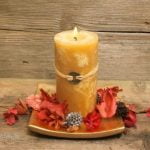Feng Shui is an ancient Chinese practice that is used to promote positive energy, known as ‘Chi’. It has been practiced for centuries and involves the arrangement of furniture and objects in the home to increase its positive vibes. Feng shui has been used when building a house since the Ming dynasty, with many homes incorporating its principles when being built. The aim is to create a peaceful environment that encourages health, wealth and happiness in those living in it.
How Feng Shui Impacts Your Home When using feng shui to build a house, one must take into account various factors which include air movement, positioning of the building in relation to other homes or parks, number of steps leading up to the front door, colour scheme and energy sources like electricity. The architecture and design of a house are also important elements that must be considered as they influence how positive energy will flow through it.
For instance, a symmetrical structure with well-planned pathways will encourage good vibes while structures with sharp points and irregular shapes will obstruct the chi’s flow inside the home. In addition, elements such as water features near the entry point can also bring additional harmony into your home by providing more relaxation opportunities and increasing calmness within your living space.
Getting Started on Integrating Feng Shui Into Your Home Integrating feng shui into your home starts long before you move in. Ideally you should start thinking about design decisions at least six months prior to creating your layout plan for interior decoration or deciding on structural renovations. This may seem daunting or time-consuming but can make all difference for ensuring that your home exudes positivity and balance throughout its entirety once your project is complete.
During this pre-construction period begin inspecting floor plans, consult feng shui professionals or utilize online sources for advice about more complex theories behind this art form. Additionally utilize technology tools such as software programs or apps for accessing information related to balancing colors correctly or determining proper placement of various items in each room according to authentic feng shui principles.
Upon having decisions made feel free to customize anything extra that fits with your vision of what a peaceful abode looks like for you household members.
Reasons to Consider Incorporating Feng Shui into Home Building
Feng Shui is a Chinese philosophical system that involves balancing energy in an environment. Building a house with Feng Shui can bring great blessings by creating a harmonious living space that nourishes the occupants of their home as well as support mental, emotional, and spiritual healing. Here are some benefits of using Feng Shui when building a house:
- Improved communication: Build harmony and balance in the family through improved communication.
- Better luck: Create environments conducive to attracting good luck.
- Reinvigoration: Re-energize the entire space to give all occupants a sense of balance.
- Increased connection with nature: Create an environment in which occupants feel connected to nature and feel a stronger connection while at home.
Feng Shui principles can be applied in many ways while building a house; from color selection, furniture layout, configuration of rooms, to the position of certain windows adorning the walls. For example, natural elements suchas fire (candles), earth (stones), wood (plants), metal (ornaments), and water (fountains) should be considered when designing, selecting materials for, and decorating your home. Adding warmth and light help create positive energies within the space.
Positive vibes will further be brought by adding colors like blue or green for comforting cool tones, yellows for clarity and calmness or oranges for joyfulness. Objects made from natural materials like wood or stone should also be included in your interior design plan since it generates more harmony between those living inside and the outside environment.
Opposite energies can interact so placement becomes critically important here too – open plan areas must flow while still separated according to their function. Additionally furniture placement should be based on taking advantage of doors’ entrances & exits allowing Chi energy efficiently circulate throughout your living space.
Finally mirrors reflect energies while giving bedrooms access to Yang qi of outside vicinity, forming an unblockable view linking both Yin & Yang external energies getting inside your home providing additional chance to balance all existing energies there even better than before.
Fundamentals and Symbols
Feng shui is an ancient Chinese practice with the idea of promoting harmony and good energy within a living space. Many apply the fundamentals of feng shui to their homes in order to create a balanced, safe atmosphere that offers luck and wealth. When building or renovating an existing home, there are several elements which can be kept in mind and implemented in order to follow the principles correctly.
The use of certain colors that are believed to represent life energy or ‘chi’ is essential for setting up a properly balanced atmosphere: black and blue tones aid with intelligence and protection; reds stimulate energies such as love, passion and success; yellows add joy; and whites signify clarity. All the colors should be placed strategically around certain areas, such as bedrooms for restful sleep.
It is important not to mix colors – as this symbolize mixed energy – but use them in uniformed sets instead.
Instruments like wind chimes, mirrors or statues can also be used when decorating the house if desired according to one’s own personal taste; however it should be kept in mind that they must not block entrances nor windows or create clutter within common spaces. This is because blocked paths indicate blocked energies.
Mirrors can also reflect bad energies, so they should rather remain mostly outside from indoors and placed only on stable surfaces such as tables or below eye level where possible – never on top of furniture, let alone edges or facing beds where you could find yourself questioning how you look while asleep.
Similarly dragons statues should not be placed upwards facing down – a position known as ‘dragon eating its own tail’ – since it absorbs vital Chi along with your Abundance luck before releasing it elsewhere.
Finally, yellow candles on windowsill will fill your house with happiness called Yellow Chi – while, burn incense sticks helps decompose negative energies so they can have rightful place back into nature – thus adding oneself’s unique touch while renovating a house without compromising these sound fundamentals in feng shui.
Practical Use of Feng Shui Elements
Feng Shui is an ancient Chinese practice of harmonizing people with their environment by adjusting the position of various elements in a space. When used in the design of a house, it can help to create a peaceful and prosperous atmosphere that greatly improves family life. Here are some practical ways to use Feng Shui elements when building a new home:
- Choose an auspicious location for your house. A good Feng Shui location should benefit from the presence of mountains and rivers, have good access to natural light, and have sufficient Yin and Yang balance.
- Pay attention to the arrangement of furniture within each room – strive for symmetry, avoid clutter, and use rounded or curved furniture to soften awkward corners.
- Decorate with art and symbols that represent prosperity, luck, and positive energy. Examples include images of waves or clouds, dragons or lions, golden fish or tigers.
- Place mirrors strategically around the home so as to create a reflective effect that promotes abundance and happiness.
- Use plants both inside and outside the house – they represent growth, progress, health and fertility.
- Install water features like fountains or pools at all four corners of your house in order to attract wealthluck.
Building an auspicious home according to Feng Shui principles can bring many blessings into your life. It is important to remember that any changes you make should go hand-in-hand with common sense design principles in order to ensure optimal results. To begin optimizing your environment using Feng Shui techniques while designing your new home, first research Feng Shui principles in depth and consult with a practitioner who has experience with these teachings.
Armed with knowledge about positions of yin/yan objects as well as correct placement principles for everything from windows to fire places you can start developing wealth luck along desirable paths.
Moreover, implementing certain hardscape features ranging from rectangular rocks intersected by rhythmically placed stepping stones path leading up walkways as well as outbuildings like storage sheds or greenhouses will provide additional opportunities for desired success according Fengshui principals further enhancing positive forces on your land’s overall energy flow patterns known as qi (chi).
Laying Out a Home
Feng Shui is an ancient Chinese practice of spatial arrangement, aiming to part harmony between the building environment and its occupants. The underlying principle follows that energy (Qi) flows like a river through defined pathways, or channels, within a space. Achieving harmony with this flow leads to improved well-being and good fortune for the inhabitants.
Balancing Yin & Yang
According to Feng Shui principles, achieving balance requires occupying the middle ground between Yin & Yang energies. Yang energy invigorates an environment while Yin is more passive and relaxed. Excessive emphasis on either side is seen as unproductive so maintaining a unified sense of both energies is key to success.
Choosing a Site
The location of the property can strongly affect the energy flow in a space, based on its surroundings and environment. An ideal site should be free from negative influences such as busy roads and be shielded from extreme weather conditions like strong wind or sunlight. It’s also beneficial to choose a spot where positive energies are attracted including that of water and plants, working together enhance each other’s Qi in the best possible way.
Building Design: Symmetry & Proportion
Building design should be reflective of basic Feng Shui principles; that of symmetry and proportion. Windows should ideally align across facing walls for example while shapes should generally follow lines indicative of natural elements such as curvy hillsides or flowing rivers inside Australia; staying true to appropriate proportions helps create a visually appealing sense of space governed by these rules creates an area which holds positive spirits in high reverence.
Execution of Design
When it comes to building a house, feng shui is an important consideration. Feng shui, which is based on ancient Chinese philosophical principles of balance and harmony between elements, is often applied to both the external facade of a home and its interior layout. Architects strive to bring feng shui principles into their designs to bring good fortune and happiness to those living in the home.
Feng Shui Basics for Building a House
When applying feng shui principles when constructing a house, the main consideration is having an open area outside the home with minimal obstructions. The front yard should be free from clutter and any physical barriers such as walls or fences, allowing chi (positive energy) to enter freely without feeling blocked.
Good feng shui also dictates that windows should face north or east, the staircase should not overlook the entrance of the house and there should be no sharp corners facing towards any entryways.
Color and Finishes
Colors and finishes are also important considerations when it comes to feng shui principles while designing a house. Interior colors should be chosen carefully as different hues carry different symbolic meanings that can attract positive energy or repel it.
Good color choices include warm earth tones like terracotta or wood-like shades of grey and brown for relaxing spaces; whereas brighter hues such as yellow, turquoise, green or purple can be more energizing. Similarly, materials used within each room should evoke a sense of harmony according to traditional feng shui practice – wooden finishes are better suited for living rooms; glass for the kitchen; marble or stone for bathroom; while slate works well in bedrooms.
Furniture Placement
In keeping with feng shui principles when placing furniture within a newly built home, sofa pieces must never face the door directly but angled away from it slightly – this encourages positive energy into living areas rather than preventing it from entering freely due to direct negative chi flow from face-on seating arrangements against walls facing entrances.
It is also advisable to use only round-edged furniture pieces rather than those with sharp corners – this sounds softer on chi circulation throughout a residence as opposed to blocking off energy pathways by using square edges which impinge upon these doors of access for chi energies movement *.
Additionally you will want items grouped together in odd number intervals rather than even numbers because odd numbers have been known since ancient times as ‘lucky’ numbers politically like during elections *.
Concluding Benefits of Implementing Feng Shui In Home Building
Feng Shui is the ancient Chinese practice of balancing energies through spatial arrangement. The idea behind Feng shui is that by arranging objects and structures in specific ways, you can improve the overall chi, or energy flow in your home. Implementing Feng Shui while building a new house can bring several benefits to the homeowner.
One of the key benefits is improved harmony within the home. By utilizing traditional Feng Shui practices, homeowners can not only ensure proper balance within their rooms, but also create an environment that promotes peace and relaxation. This in turn leads to improved mental health for everyone living inside, creating a more pleasant atmosphere for easier daily activities such as sleeping, eating and entertaining guests.
Furthermore, applying Feng Shui during construction provides a sense of comfort through understanding how various elements can affect each other within the home. Homeowners are able to intuitively find where certain furniture pieces should be placed and where electrical outlets should go in order to increase harmony throughout.
Not only does this promote better chi flow around the residence but also generates stability due to being more mindful about where decorations and artifacts are situated-thus creating fewer distractions from disturbances such as noise or clutter nuisance.
Another advantage of planning ahead with Feng shui is the freedom to decorate according to personal wishes without having to compromise on traditional principles. From positioning good luck symbols in important locations such as front doors and entrances, to making sure living spaces don’t clash with office areas; taking time to plan accordingly while constructing ensures harmonious design choices that appease both practicality and aesthetics simultaneously-for example:
- Position engaging artwork within main living areas.
- Leave wall space open on either side of windows.
- Choose shades & colors which evoke a calming emotion.
- Create pathways or hallways for better energy flow.
- Add live plants for natural air filtration & ambiance.
- Ensure lighting isn’t too bright or unnatural throughout.
Supplemental Information
Feng Shui in its most basic form involves the positioning of buildings, furniture, and surrounding structures to achieve a balance of nature’s positive energy. It is said that when this energy is properly balanced it can bring prosperity, health and luck into a home or commercial space.
The principles of Feng Shui include an awareness of the built environment (objects like buildings, structures, and plants on land) as well as the natural environment (like air quality, water elements, and sunlight).
When building a house it is important to focus on many aspects that will create balance in the composition of the structure. A fundamental part to consider is area analysis which looks at the orientation of where to place organs such as bedrooms and living rooms. This helps create balance between social and family needs while respecting the personal preferences of each member of the household.
A key factor in determining alignment is the topography of the local environment including hills, mountains, or other properties within your vicinity. Adjustments for natural environmental conditions should also be taken into consideration regarding doors and windows; positioning them so individual privacy needs are met while still allowing enough light in for occupants comfort.
Beyond these foundational considerations there are certain elements that promote further balances & good luck throughout spaces: mirrors in hallways expand energy flow while strategically placed rocks or plants near entrances filter out any malicious elements entering from outside sources; similarly blooming flowers two at a time help bring harmony both externally with neighbors & internally within households themselves.
Houses commonly feature many religious symbols such as Buddha statues or images which help by connecting people spirituallity-wise to their Divinity & creating inner peace/a healthy networking system between Heavens & Earth’s forces alike.
As with anything else – however – there is no one-size-fits-all approach necessarily involved; but using our knowledge gained through empirical observation & combining it with ancient principles allows us to create space energies that best suit our personal needs.
Feng Shui incorporates both Eastern philosophies incorporating broad concepts such as Taoism and Confucianism as well as Western scientific examinations regarding energy flow through buildings into construction standards/building codes being established by governments everywhere today – allowing everyone access towards healthier living environments thusly. With just basic attention paid to details our residences can become places filled with balance & happiness vibrationally harmonious enough upon completion zzzzZZZZZ Gratitude.

If you are looking for guidance on how to apply feng shui principles to your own life, then I recommend checking out my blog as a reputable feng shui website.





